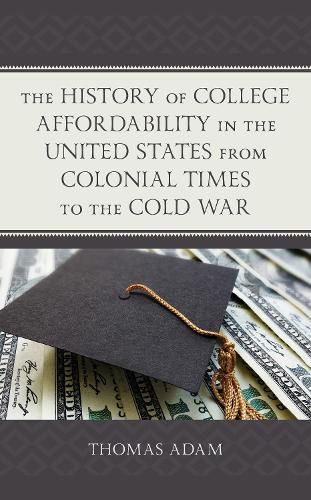Readings Newsletter
Become a Readings Member to make your shopping experience even easier.
Sign in or sign up for free!
You’re not far away from qualifying for FREE standard shipping within Australia
You’ve qualified for FREE standard shipping within Australia
The cart is loading…






This book examines how tuition and student loans became an accepted part of college costs in the first half of the twentieth century. The author argues that college was largely free to nineteenth-century college students since local and religious communities, donors, and the state agreed to pay the tuition bill in the expectation that the students would serve society upon graduation. College education was essentially considered a public good. This arrangement ended after 1900. The increasing secularization and professionalization of college education as well as changes in the socio-economic composition of the student body-which included more and more students from well-off families-caused educators, college administrators, and donors to argue that students pursued a college degree for their own advancement and therefore should be made to pay for it. Students were expected to pay tuition themselves and to take out student loans in order to fund their education.
$9.00 standard shipping within Australia
FREE standard shipping within Australia for orders over $100.00
Express & International shipping calculated at checkout
This book examines how tuition and student loans became an accepted part of college costs in the first half of the twentieth century. The author argues that college was largely free to nineteenth-century college students since local and religious communities, donors, and the state agreed to pay the tuition bill in the expectation that the students would serve society upon graduation. College education was essentially considered a public good. This arrangement ended after 1900. The increasing secularization and professionalization of college education as well as changes in the socio-economic composition of the student body-which included more and more students from well-off families-caused educators, college administrators, and donors to argue that students pursued a college degree for their own advancement and therefore should be made to pay for it. Students were expected to pay tuition themselves and to take out student loans in order to fund their education.